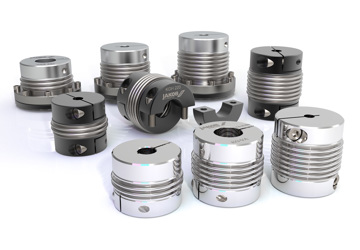

Here Dr Bill Eccles, of Bolt Science, outlines some of the common causes which can result in bolt failure in the mechanical engineering sector.
Long ago when I worked as part of a large team of design engineers, there were people who stated that fatigue was the most common cause of bolt failures, others said it was insufficient preload and fatigue was another common indirect cause. I was reminded of this when I read a recent technical paper: ‘Review on recent advances in structural health monitoring paradigm for looseness detection in bolted assemblies’. This included an interesting pie chart (Figure One), showing the distribution of articles based on bolt failures published from 2016 to 2021 obtained by keywords bolt failure, bolte d joints and machine learning.
d joints and machine learning.
I thought about how close the chart tallies with percentages of actual failures, rather than papers written about failures. It is difficult to come to any definitive conclusion as to the failure distribution across all industries, but the chart roughly aligns with my own experience of failures in the mechanical engineering sector. The largest proportion of failures that I have come across have been due to bolts coming loose, often as a result of insufficient preload.
Bolt fatigue is usually, but not always, the result of insufficient preload. This can either be due to joint separation (a gap occurring in the joint when axial forces are applied) resulting in the bolt sustaining high alternating stresses. Alternatively, in shear loaded friction grip applications, joint slip occurs and causes bolt bending and subsequently, a bending fatigue failure.
If joint slip occurs in a friction grip joint, and the bolt is prevented from self-loosening by a locking device, after several thousand cycles, bolt fatigue can occur as the bolt bends when the joint moves. This can be readily demonstrated on a Junker transverse vibration test in which a locked bolt fails by fatigue after about 3,000 cycles. A locking device is useful in preventing self-loosening but not in preventing fatigue if the loading that can cause joint slip is frequently repeated. On friction grip shear loaded bolted joints, loosening and fatigue can be due to the same underlying mechanism – joint slip due to insufficient preload.
Although the paper doesn’t define what is meant by shear failure, it is likely to be thread shear (thread stripping) together with failures associated with the direct shearing of bolts. Direct shearing, in which the bolt is sheared in half, is unusual in mechanical engineering. Most joints are friction grip and so rely upon the friction between the joint faces generated by the bolt preload; the bolt itself does not directly sustain the shear. Thread stripping in comparison is not that unusual but typically occurs when a bolt is used in a tapped hole and the length of thread engagement is insufficient.
Other less common failures include direct overload in which the bolt fails by tensile fracture. In mechanical engineering this is unusual since joint separation occurs before tensile fracture and, if repeated, results in a fatigue or a loosening failure. Overload failures are usually due to one-off high forces being sustained by the joint under extreme conditions.
Another less common failure is hydrogen embrittlement – cracks in the microstructure of high strength bolts caused by the presence of hydrogen. Most engineers will not encounter such a failure, as the hydrogen is introduced during the bolt’s manufacture (from a process such as electro- plating) or from the environment (such as corrosion).

Becca is the latest member to join our team and is eager to get stuck into the world of fasteners. She brings an enthusiastic and fresh outlook on what we do editorially and will be leading our social media activity – including sourcing material, editing articles and posting online.





